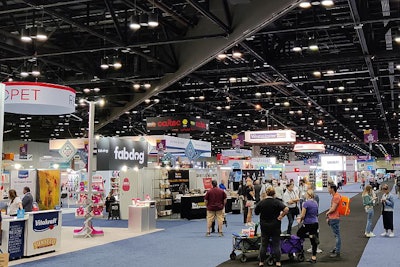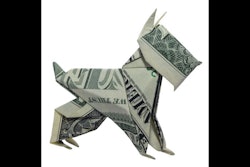
The return of Global Pet Expo (GPE) as an in-person event March 23-25, 2022, for the first time in two years was a significant, positive step forward for the pet food and pet products industry. While I didn’t attend this year, my colleagues Lindsay Beaton and Tim Wall did, and reported quite a few pet food trends on display.
However, they both also noted a decline in the number of new product launches, including for pet food. Typically, large pet trade shows offer the perfect opportunity to debut new products to pet retailers and other segments of the industry; and with GPE happening only online in 2021, I think most people were expecting robust new product activity for the in-person event in 2022. Why the apparent falloff?
Supply chain disruptions at play again?
Beaton, Wall and I discussed possible reasons why fewer pet food brands launched new products at GPE; I’d be curious to know if anyone else has thoughts?
Wall had attended Superzoo in August 2021 (also returning in person from a pandemic-driven hiatus) and said a large number of new pet food products launched then. Perhaps given all the disruptions brought on by the pandemic, most companies and brands were unable or unwilling to commit resources to do another large round of launches just seven months later?
Among those disruptions caused by COVID-19, supply chain problems are the most obvious. We all know this continues to be a problem for many industries, including pet food; and an end to those still appears on the far rather than near horizon. It stands to reason that if pet food companies are having difficulty obtaining the ingredients or packaging materials for their existing products, or experiencing delays in getting those products to market, they’d be reluctant to potentially exacerbate the situation by introducing many new products.
If you’re experiencing supply chain issues—and who isn’t now?—experts do have some advice. For example, Cindy Yakich, chief procurement officer for Alphia, offered several tips in a recent blog post, including considering domestic suppliers if you’re currently using ones outside your home country, as well as paying close attention to planning and forecasting.
She also stressed the importance of having good relationships with your suppliers, a point echoed by Rodney Nye, senior vice president of business development-dedicated contract services for J.B. Hunt Transport Inc., during the American Feed Industry Association’s (AFIA) Purchasing and Ingredient Suppliers Conference, March 8-10, 2022. “His advice to the industry: Position yourself as the preferred customer,” wrote Victoria Broehm, director of communications for AFIA. “Work with your shippers to make strategic decisions to secure dependable capacity.”
Communication is key, too
Another tip from Yakich: Be open and transparent with everyone throughout your supply chain, including retailers. Communication is essential to so many aspects of having a successful pet food product on the market, including developing it in the first place. And the pandemic also disrupted normal workplaces and workflows, which may have interfered with the new product development process in some companies, including the necessary communication piece of that process.
Leah Lambrakis, vice president of R&D, nutrition and scientific affairs at Simmons Pet Food, addressed the importance of communication in a recent episode of Beaton’s new podcast, Trending: Pet Food. “It’s all about communication early in the project, early in the process” of developing a new product, Lambrakis said, to help ensure a successful product launch, including adhering to the timeline. “Communication is critical.”
For other practical tips on new product development from Lambrakis, as well as candid sharing of her own experiences, I encourage you to listen to the podcast. (Plus the other episodes Beaton has posted; all are insightful and helpful.) In addition, Lambrakis will be presenting at Petfood Essentials 2022 on May 2 on managing timelines, expectations and competing priorities in launching a new pet food product.

















